On arrival, after clearing immigration, you will be met by our representative and escorted to your hotel.
Mumbai (formerly Bombay), the gateway to India in the days of the British Raj, is today India's commercial capital. The city dates back to around the first century AD, when the area consisted of seven islands separated by the sea. In 1661 the Portuguese presented the port and islands of Bombay to the British, and in 1668 the East India Company leased all of the islands from the British Government for £10.00 in gold per year.
On independence in 1947 the Bombay presidency became Bombay state, and subsequently Bombay became the state capital of Maharashtra. Today Mumbai is a fascinating crossroads of the east and west where the sophistication and technology of the first world is combined with the eastern ability to sell almost anything against a backdrop of oriental colour and scent.
Besides being the major port, Mumbai is the most cosmopolitan, fastest moving, affluent and industrialized city in India. It is India's financial, commercial and industrial centre, and the centre of the film industry (Bollywood).
Check in to your hotel and spend rest of the day at leisure (No vehicle).
Overnight in Mumbai
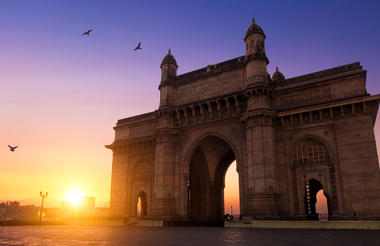
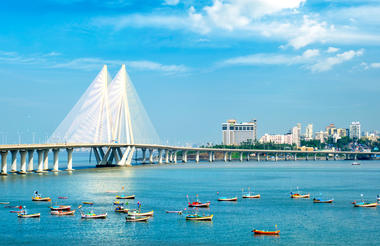
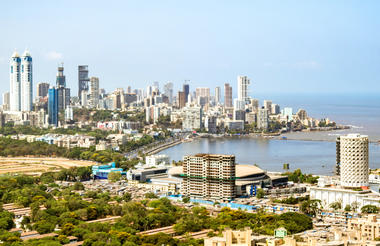
After breakfast, we will start exploring Mumbai and surrounds. Sites to be visited could be determined by your own special interests.
The Gateway of India, Mumbai's most striking monument, is an imposing arch in the Indo-Saracenic style with Gujarati and Islamic elements. It was built to commemorate the visit of King George V and Queen Mary to India in 1911. Near the Gateway is a statue of Shivaji, the 17th century founder of the independent Hindu Kingdom of Maharashtra.
Princes of Wales Museum: Chhatrapati Shivaji Maharaj Museum previously known as Princes of Wales Museum was built to commemorate the visit of the King George V’s first visit to India in 1905 when he was still the Prince of Wales, and opened in 1914. With sections on art, archaeology and natural history, it houses rare and ancient exhibits of India’s history as well as objects from foreign lands. Also Indus Valley Civilization artefacts, relics from ancient India and examples of Mauryan Art. (Closed on Mondays).
Mani Bhawan: This is where Mahatma Gandhi stayed when he visited Mumbai between 1917 and 1934. He preached Ahimsa or Non-violence, and it was here that his association with the charkha or spinning wheel began in 1917. It now houses a picture gallery, a 20,000-volume research library and a film and recording archive.
Dhobi Ghat: A unique feature of Mumbai, the dhobi is a traditional laundryman, who will collect your dirty linen, wash it, and return it neatly pressed to your doorstep. At Dhobi Ghat the clothes are soaked in lather water, then thrashed on the stones, later thrown into huge vats of boiling starch and then hung out to dry.
Marine Drive: also known as the "Queen's Necklace" is a pleasant drive along the shoreline of Back Bay, from Nariman Point past Chowpatty and up to Malabar Hill.
Dharavi slum walking tour: Dharavi is one of the largest slums in Asia and it has more than one million inhabitants. It is a vibrant community and its industries have a huge turnover. On a guided walk in the slum visitors will see temples, mosques, churches and pagodas that stand side by side, an indication that the population has come from all over India. Local industries include soap factories, bakeries, potters, leather-tanning, and recycling as well as much more.
Bollywood Excursion: Bollywood is the largest producer of films in the world. You will be taken to a movie set to observe behind the scenes Bollywood film-making and how the technicians operate. You will also have the chance to see make-up rooms, dubbing rooms, music theatres and dance studios. Dancers will perform well-known Bollywood routines for visitors. Afterwards there is the opportunity to drive passed the homes of famous Bollywood stars who live in an exclusive part of Mumbai.
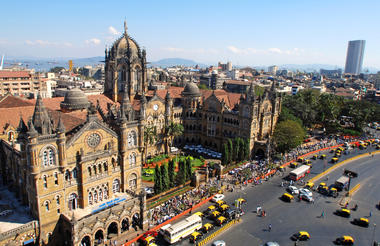
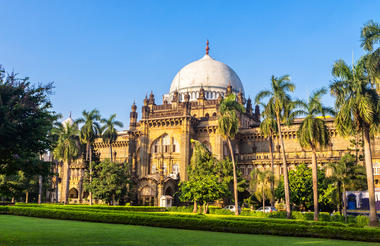
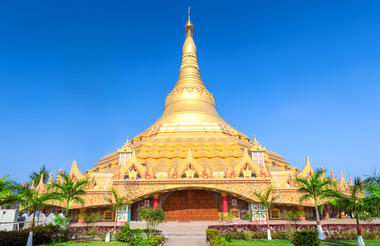
After breakfast, transfer to the airport for your flight to Ahmedabad in Gujurat.
Ahmedabad, or Amdavad, is the largest city in the state of Gujarat and one of western India’s most important cities with a population of over 6.5 million people. It is an important economic and industrial hub. Ahmedabad was established by Muslim ruler Sultan Ahmed Shah and it's India's first UNESCO World Heritage city because it was the cradle of the non-violent movement for India's independence, led by Mahatma Gandhi.
After checking in to your hotel, you will be taken to the Calico Museum of Textiles
The museum contains one of the world’s finest collections of handmade and modern Indian textiles. There are many stunning pieces, displaying unbelievable skill and indulgence. You’ll see Kashmiri shawls that took three years to make, and double-ikat cloths, where each of the 100,000 threads are individually dyed before weaving.
After lunch there is time to
Visit Sabarmati Ashram
Sabarmati Ashram was Mahatma Gandhi's headquarters from 1917 to 1930 during India’s long freedom struggle. It is believed that Gandhi chose this site because it lies between a cemetery and a jail, and any non-violent protestor was bound to end up in one or the other. Today, Gandhi’s humble home has been preserved and there is a museum which has a detailed, informative record of his life and his teachings.
Take a heritage walk through the old city which has a rich Mughal heritage. There are beautiful monuments, intricate building designs and pol structures to be seen.
Dinner in the hotel
Overnight Ahmedabad
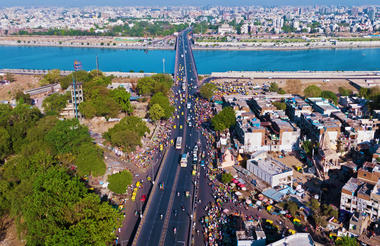
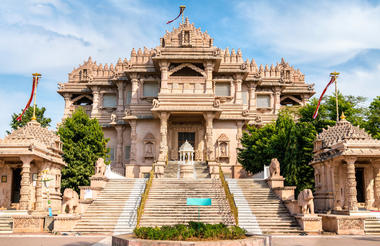




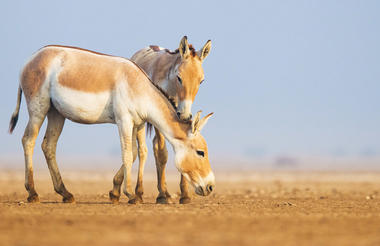
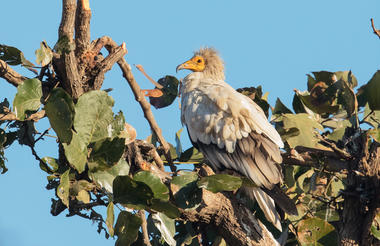
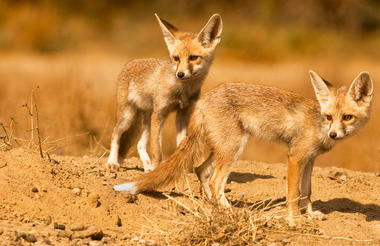
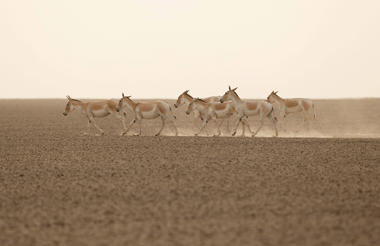
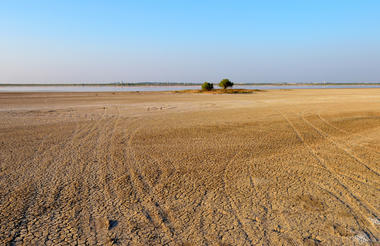
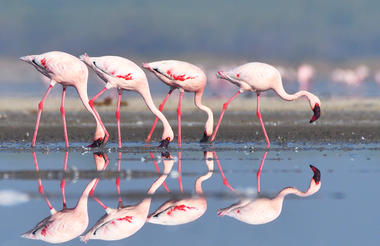
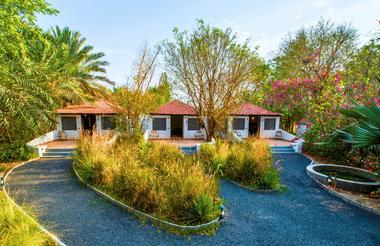
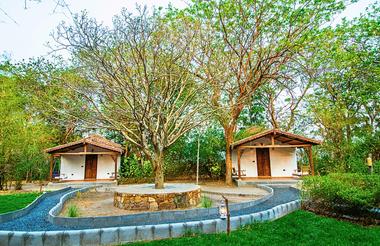
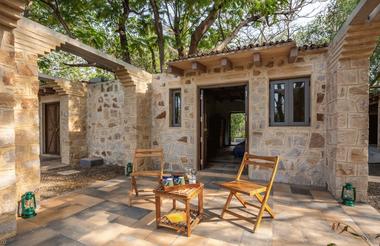
After breakfast, you will leave the Little Rann of Kutch and move to to the city of Bhuj.
On the way we will visit the town of Radhanpur where we will explore the Hansiba Museum. It is strongly linked to the SEWA Trade Facilitation Centre. SEWA stands for Self Employed Women's Association which is a member-based organisation of poor self-employed women workers and Hansiba represents the unique inherited embroidery skills practiced by the thousands of craftswomen of Radhanpur.
In Radhanpur you will visit the work stations of the craftswomen and learn about the art of embroidery, patchwork, appliqué and mirror work,
On the way to Bhuj, you will see vast salt pans and get a chance to meet the salt workers.
Dinner in the hotel
Overnight in Bhuj
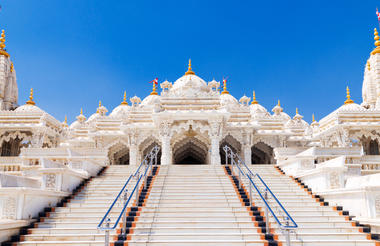
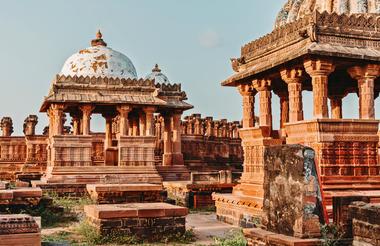
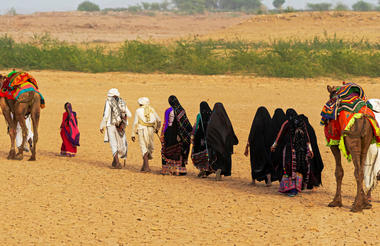
Bhuj, the capital of the Kutch region, is a walled city with a long history. The 1819 earthquake changed the course of the Indus River, so that the Ranns (marshes) became deserts instead, and the Kutch (meaning island) was no longer seasonally underwater. Bhuj was devastated by a massive earthquake in 2001, which badly damaged important historical buildings (Aina Mahal and the nearby Prag Mahal) which have been restored. The city is a commercial centre for local commercial crops such as wheat, barley, cattle, cotton, as well as salt Handicrafts include the manufacture of cotton cloth and silver items. Bhuj is worth exploring as a destination but it is also important for textile tourism.
Notable sites include the Hall of Mirrors at the Aina Mahal; the bell tower of the Prag Mahal next door; the Ramakund stepwell with its sculptures; and the produce market.
After breakfast, we will visit the nearby village of Ajrakhpur.
Ajrakh is the highly skilled profession of patterned block-printing using colours derived from nature, such as indigo, turmeric, pomegranate, henna, iron and mud. The method is complex involving up to sixteen different processes. The 3,000-year-old art of Ajrakh is preserved by the Khatris who are a community of block-printers. The Khatris (artisans who ‘apply colour to cloth’) settled in the village of Dhamadka about 400 years ago. In the 2001 earthquake the village was damaged and the Khatris built a new village which they named Ajrakhpur ('place of Ajrakh'). Today there are Khatris living and working in both Ajrakhpur and Dhamadka.
For the local people, their cloth is an essential everyday decoration as well as a symbol of their identity. The printed, woven, embroidered, or tie-dyed textiles worn by a person signify gender, age, religious affiliation or caste, marital status and economic standing.
There will be the opportunity to have a hands-on expereince of ajrakh printing in a local workshop.
Dinner in the hotel
Overnight in Bhuj



After breakfast you will visit the local bandhani artists in Bhuj.
Bandhani is an ancient art dating back to at least 4000 B.C. It was evident in the earliest Indus Valley civilisations. The technique involves picking the textile with finger-nails into many tiny bindings that form a figurative design and tying, before dyeing,
The patterns are called Ekdali, Shikari, Mothra and Leheriya depending on the manner the fabric is tied. The final products are known by names such as Chola, Patori, Khombi, Chandrokhani, etc. Yellow, green red and pink, as well a maroon, are the most common colours.
Different colors have different meanings. For women, red represents a bride or recently married girl; a yellow-coloured background indicates recent motherhood; and the pattern and colour on the fabric indicates the community to which they belong.
The remainder of the day is at leisure or for you to explore Bhuj.
Overnight in Bhuj



After breakfast, we will drive to the nearby village of Bhujodi to see the weaving process there. The weaving process here is called 'tana bana' because the longer thread, the warp or tana, is laid on top of the shorter weft or bana.
The village of Bhuojodi is made up of different groups including the Vankars (the weavers) and the Rabaris (originally nomadic shepherds). The Vankars were originally Mughals who migrated from Rajasthan about 500 years ago to weave for the Rabari community who supply the weavers with fleeces from their sheep. In return, the Vankars made woollen veil cloths, skirts and coarse woollen blankets for the Rabaris, Ahirs and Rajputs.
There are about 1200 people working in the production of textile crafts. There are two types of looms used, shuttle and pit.
After lunch, there is time to visit the important sites of Bhuj. The Aina Mahal (or 'Hall of Mirrors') sits adjacent to the Prag Mahal.
Aina Mahal: This mirror palace, which is at the north-east corner of Hamirsar Lake, has exquisite glass work, including chandeliers and painted tiles, and mosaic tiles. The palace was built in the middle of the 18th century, strongly influenced by an Indian artisan who had spent 17 years in Europe.
Prag Mahal: this large 19th century palace was severely damaged in the 2001 earthquake but is still worth a visit. It is a mixture of Italian and Indian architecture and its tower and clock have been repaired. Visitors can explore the main palace halls and climb the 45 metre bell tower, which offers views of the city of Bhuj.
Overnight in Bhuj Hotel



After breakfast, you will embark on a day's excursion to the nearby historic, fortified port city of Mandvi, once Gujurat and Kutch's principal port (nowadays overtaken by Mumbai). In the past, the city was important for wooden shipbuilding and its Indian Ocean trade.
You will have the opportunity to stroll through the narrow streets on foot, wander around the Vijay Vilas Palace (the summer home of the King of Kutch), visit the bazaars (where you can purchase bandhani textiles), explore the shipbuilding area and visit a beach. At the Tower of Wagers bets would be made by wealthy shipowners as to whose ships would arrive first from the East Africa trading fleet.
The beach at Mandvi is one of the best in India. Enjoy a leisurely afternoon there and an evening meal in a beachside Mandvi restaurant before returning to Bhuj.
Overnight Bhuj hotel
After breakfast, check out and transfer to the Bhuj airport for your flight to Mumbai.
Once at Mumbai, check in to your Mumbai hotel.
The remainder of the day is at leisure, an opportunity to relax beside the pool or further explore the sights of Mumbai. Choices available to you include such activities as a Dharavi 'Santaram' slum tour or even a visit to Bollywood.
Overnight Mumbai hotel



After breakfast, check out and transfer to the airport for your return home.






